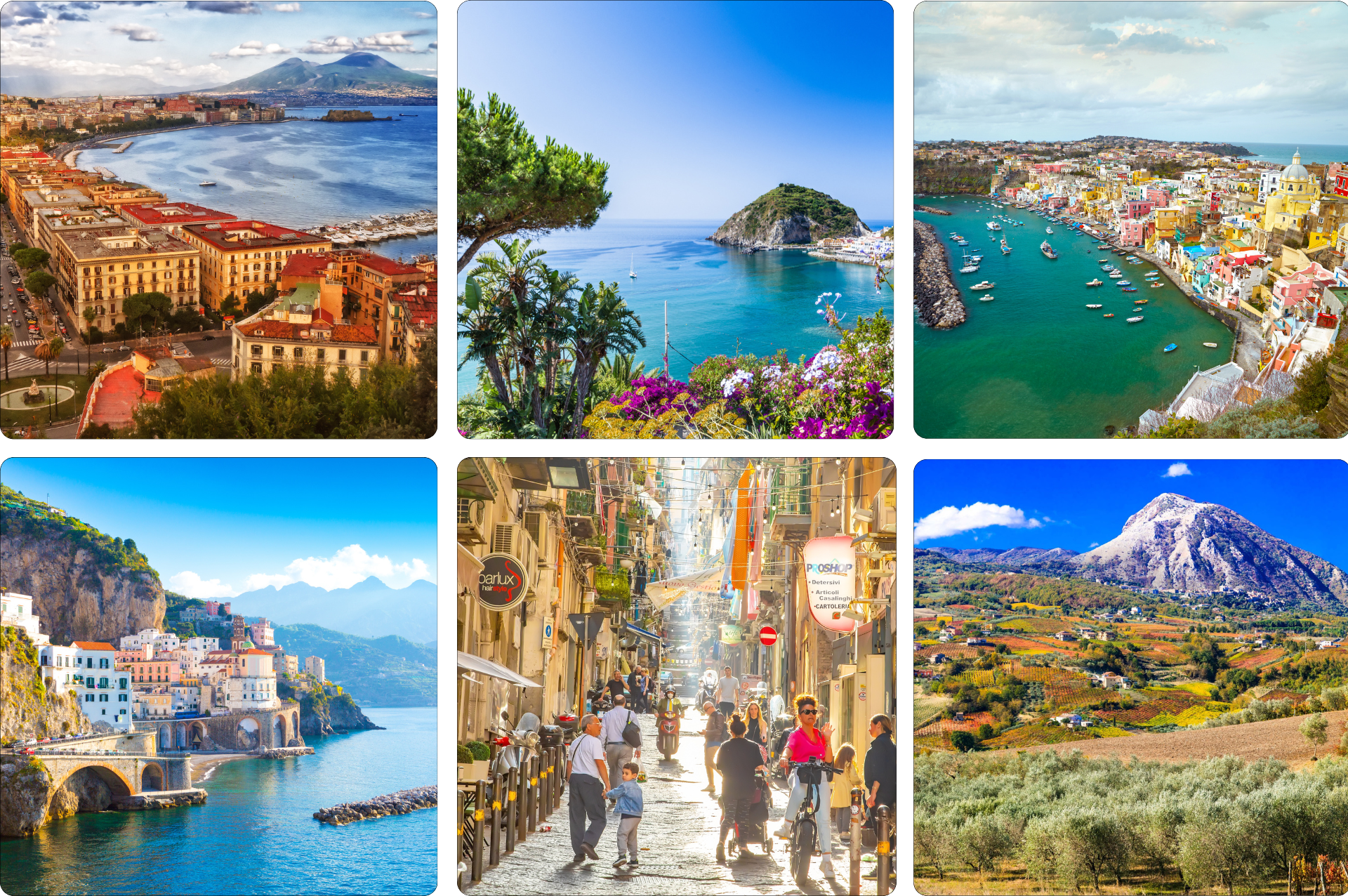Campania

The thousand-year history of Campania: from its origins to Roman domination
Campania, with its rich history that has its roots in the Stone Age, around 70,000 years ago, has been the cradle of different civilizations and cultures. Archaeological excavations have revealed the existence of primitive human settlements, testifying to the presence of a hunter-gatherer society before the advent of agriculture. The region then became the scene of the settlement of Greek populations in the 8th century BC, who founded cities such as Pithecussae, Cuma and ancient Parthenope, laying the foundations for the development of important cultural and commercial centers. The arrival of the Etruscans, Samnites and Lucanians marked further changes in the social and territorial composition of Campania, until the Roman conquest between the 4th and 3rd centuries BC, which inaugurated one of the most flourishing periods of its history.

Campania: a region of historical monuments and UNESCO heritage
Campania is rich in archaeological sites and monuments that narrate its long history. Pompeii and Herculaneum, buried by the eruption of Vesuvius in 79 AD, offer a unique insight into daily life in ancient Rome. Other notable sites include the Royal Palace of Caserta, with its Italian gardens, and the Amalfi Coast, famous for its breathtaking landscapes and picturesque coastal villages. The cultural richness of Campania is further enriched by Naples, with its historic center, the Monastery of Santa Chiara and the lively Via San Gregorio Armeno.


Campania: flavors and food and wine traditions
Campania boasts a food and wine heritage of inestimable value, characterized by a variety of products that are the result of a happy combination of mild climate and fertile soil. Already in Greek and Roman times, the region stood out for the production of fine oil and excellent wines, including the famous Colatura di Alici di Cetara. Campania cuisine, enriched over time by the influence of foreign dominations, includes iconic dishes such as Neapolitan pizza, potato gateau and buffalo mozzarella, which represent the perfect synthesis between tradition and culinary innovation.


Demographic and geographic data
With a population of approximately 5.8 million inhabitants, Campania covers an area of 13,590 square kilometers. The region is characterized by a varied landscape which includes mountains such as the Alburni Mountains, the Picentini Mountains and the Matese Mountains, as well as a vast coastline washed by the Tyrrhenian Sea. The presence of lakes, main rivers and the richness of biodiversity make Campania a territory of rare beauty and great environmental interest.

